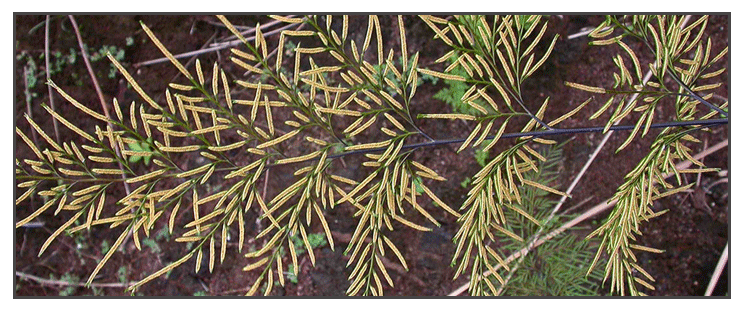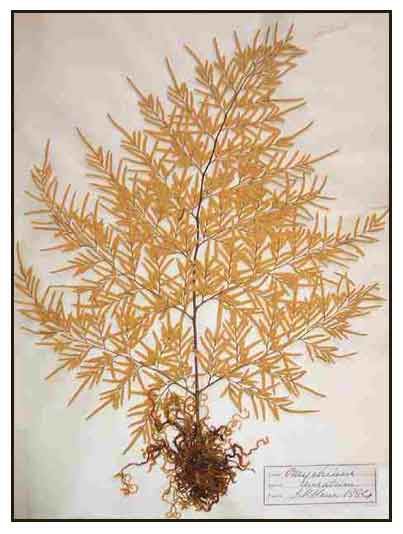
Family •
Pteridaceae
Pakong-anuang
Onychium siliculosum (Desv.) C. Chr.
Jin fen jue
| Scientific names | Common names |
| Allosorus auratus (Kaulf.) C.Presl. | Buhok-virgin (Tag.) |
| Cryptogramme aurata (Kaulf.) Prantl | Pako (Bik., Ilk., Pamp.,Bis., Tag.) |
| Onychium auratum Kaulf. | Dila-dila (Tag.) |
| Onychium aureum Kümmerle | Pakong-anuang (Tag.) |
| Onychium chrysocarpus (Hook. & Grev.) C. Chr. | Pako (Tag.) |
| Onychium siliculosum (Desv.) C.Chr. | |
| Onychium tenue Christ | |
| Onychium viviparum Kümmerle | |
| Phorolobus siliculosum (Desv.) Desv. | |
| Pteris aurata (Kaulf.) Mett. | |
| Pteris chrysocarpa Hook. & Grev. | |
| Pteris chrysosperma Hook. & Grev. | |
| Pteris siliculosa Desv. | |
| Pako is a local name shared by many medicinal plants: (1) Pako - Athyrium esculentum (2) Pakong-alagdan - Blechnum orientale (3) Pakong-anuanag, pako, buhok-virgin, dila-dila - Onychium siliculosum (4) Pakong-gubat, pakong kalabao, Pityrogramma calomelanos (5) Pakong-parang - Pteris mutilata (6) Pakong-roman - Ceratopteris thalictroides. (7) Pakong-tulog, pakong-cipres, Selaginella tamariscina (8) Pakong buwaya - Cyathea contaminans. | |
| Dila-dila is local name shared by many different species of plants: (1) Onychium siliculosum: Buhok-virgin (Tag.); dila-dila (Tag) (2) Nopalea cochinellifera: Dila-dila (Ilk.); dilang baka (Tag.) (3) Elephantus scaber: Dila-dila (Tag.), kabkabron (Ilk.); prickly leaved elephant's food (Engl.) (4) Pseudoelephantopus spicatus: Dila-dila (Tag.); dilang-aso (Tag.) Kabkaron (Ilk.) | |
| Other phonetic variations and use of "dila" for other local plant names further add to the confusion: Dila-dilag (Spilanthes acmella); Dilang aso (P. spicatus); Dilang-baka (N. Cochinellifera); Dilang-boaia, dilang-halo (Aloe vera); Dilang-butiki (Dentella repens); Dilang-butiki (Hedyotis philippensis); Dilang-usa (Trichodesma zeylanicum); and Diladila (Cordyline roxyburghiana). | |
| Onychium siliculosum (Desv.) C. Chr. is an accepted name The Plant List | |
| Other vernacular names |
| CHINESE: Jin fen jue. |
| LAOTIAN: Ko kout pha. |


 Distribution
Distribution

